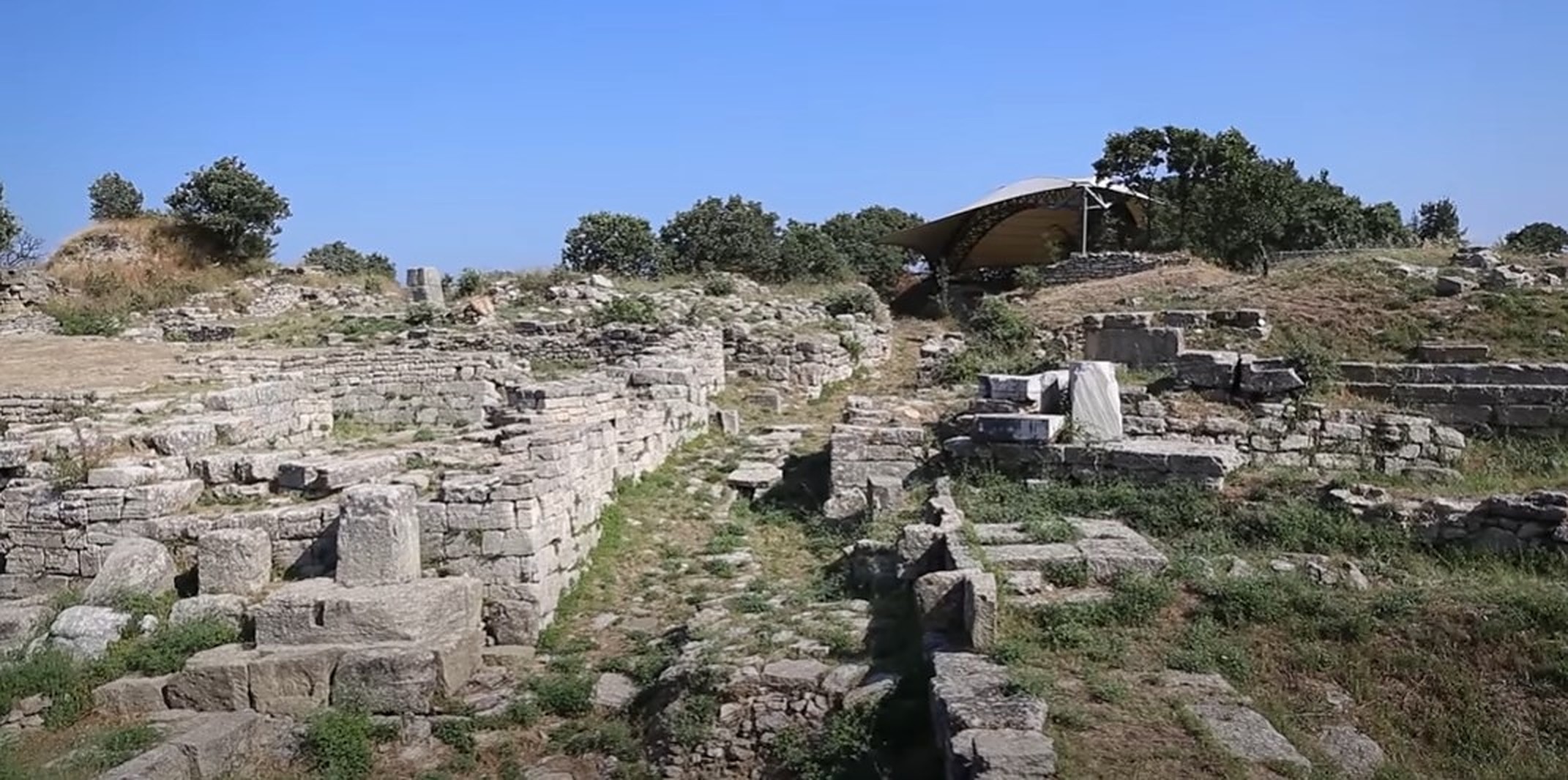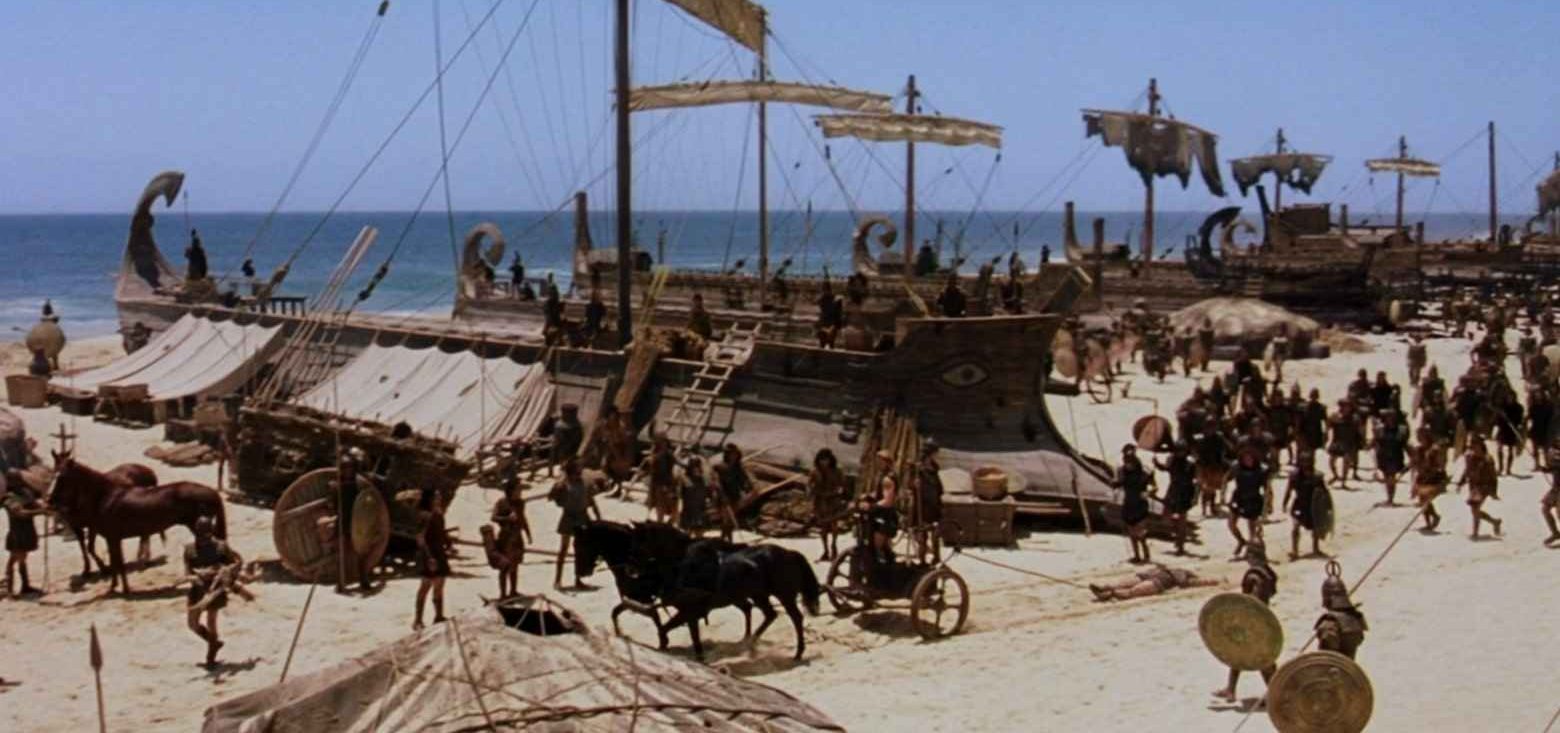Wolfgang Petersen’s directorial ‘Troy’ is an epic historical drama movie that chronicles the invasion of the eponymous city by Greek forces. When Trojan prince Paris falls in love and elopes with Helen, the wife of Menelaus of Sparta, the latter’s brother Agamemnon vows to seek revenge. Thus, he gathers all the Greek states under his reign and wages war against Troy, but loyalties get tested when his most skilled warrior Achilles falls in love with a Trojan Priestess. Given the vivid depiction of war and the backdrop of the movie, the audience is left wondering whether Troy and its glorious history exist in reality. Now, let’s discuss the answer to this at length, shall we? SPOILERS AHEAD.
Is Troy a Real City?
For centuries, there has been a major debate over the existence of Troy in real life. The historic city has been elaborately mentioned in Homer’s epic 8th Century BC poems ‘Iliad’ and ‘Odyssey,’ the former also being the source material for the movie. In the poem, Troy is depicted as the capital of a powerful kingdom during the Heroic Age, built on a steep hill and protected by fortress-like walls and towers. The massive wooden gates of the city are impenetrable and the temple of Goddess Athena sits atop the hill.

Though the legend of the Trojan War that destroyed the city played a crucial role in Greek mythology and literature till the late 19th century, it was in 1871, when archaeologists Heinrich Schliemann and Frank Calvert excavated the probable site of Troy in Hisarlik, an ancient city near Mount Ida in present-day northwest Turkey. The archaeological site comprises the Hisarlik hill, which is a mound-like structure with several layers of debris that has elements from the numerous settlements that may have inhabited it across three millennia. Apart from this, the fields lying south of Hisarlik hill are also included in the designated territory of Troy.
The site has been divided into nine distinct layers, each having components that span from the Early Bronze Age right up to the Byzantine Era. Some of the layers do match the descriptions of Troy as per Homer’s poems, and thus, historians have been able to establish that the myth of such a city might have some truth to it at least. In the Archaic Era, a new city was constructed on the site, and later in the Classical Era, it became a site of homage to legendary heroes. Each layer of the archaeological site has a distinct citadel, which represents the civilization it belongs to.

Other factors that have given more validity to the claims of the city being the very Troy in Greek literature are the various pottery artifacts from the Bronze Age, silver cups, and arrowheads that have been excavated from the site. They resemble the very age Homer has written about in his works. Initially, in the 16th and 17th centuries, the ruins of the Hellenistic town Alexandria Troas, which lies 20 kilometers south of Hisarlik, were considered to be Troy.
But later in 1822, Scottish journalist Charles MacLaren was able to debunk this assumption, and reveal that it was not the city archaeologists were looking for. Post Schliemann and Calvert’s discoveries, numerous other archaeologists and researchers have excavated and explored the site in Hisarlik, and have managed to add more information to what historians have gathered on Troy. It is now a tourist destination and was added to the UNESCO World Heritage list in 1998. Moreover, the Troy Museum, which has authentic and reproduced artifacts from the site and other museums, was opened to the public in 2018. It lies 800 meters east of the excavation site in Tevfikiye village.
Did the Trojan War Really Take Place?
Just like Troy, the possibility of the Trojan War has been questioned by several philosophers and historians, such as Herodotus, who in the 5th Century, estimated that it occurred 800 years before his birth. But in reality, its existence has been concluded to be next to none. Poet Homer describes the Trojan War to have taken place in the Late Bronze Age, with the siege of the city lasting ten long years. The conflict began when Trojan King Priam’s son Paris chose Goddess Aphrodite as the most beautiful, and in return, she gifted him Helen, Zeus’ daughter and the most beautiful woman to walk on earth.

Helen was the wife of the Spartan King Menelaus, and when Paris whisked her away, King Agamemnon of Mycenae, her brother-in-law, swore to take revenge on the Trojans and bring her back. Thus, he gathered the Greek forces and commenced a decade-long war against King Priam. This is the very narrative that has been majorly depicted on-screen in ‘Troy’ as well. During the excavation of Hisarlik, few of the artifacts such as the arrowheads and the evidence of fire have pointed toward past warfare.
In addition, a series of letters in the ancient Hittite language does indicate the interest of the Mycenaean Greeks in a Late Bronze Age city, which is presumably Troy. The Hittite letters further hint at a political conflict in a region named Wilusa, which was later established to be in the same region as the Hisarlik excavation site. However, apart from this brief mention as well as the names of a few mythological heroes randomly popping up in texts and tablets, there is no proven correlation with the Trojan War in Homer’s poems.
Thus, it can be concluded that Homer’s writings are mostly an exaggerated account of wars in those times and the devastation they brought on mankind. Furthermore, it pays a tribute to the heroes the Greeks worshipped and makes them examples to follow. The poet may have likely visited the geographical areas he has described in person and drawn references for his writings. Apart from Troy being a real city, there is no truth to the legend of the Trojan War or the mythological heroes, and both the poem and the movie should be only enjoyed as works of fiction.
Read More: Is Troy Based on a True Story?


You must be logged in to post a comment.